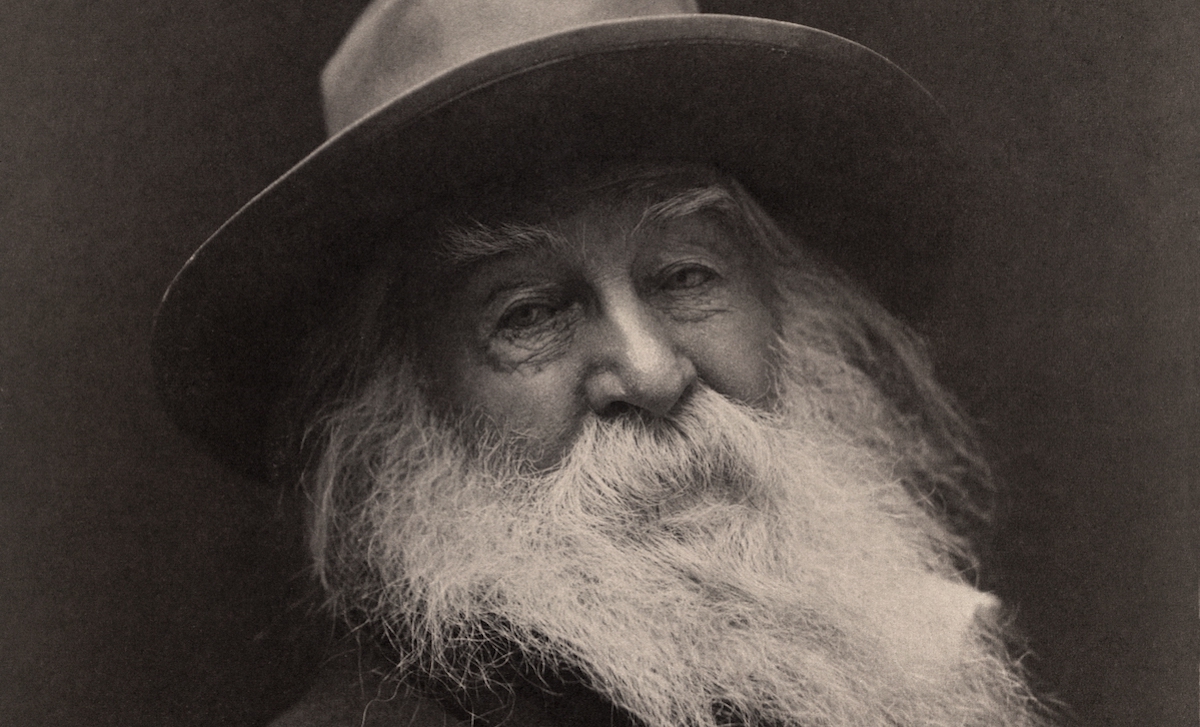Walt Whitman (1819-1892), American poet tied to the Transcendentalist movement, is famous for immortal lines like “O Captain! My Captain!” Less well-known are his penchant for literary gossip and inability to throw a single scrap of paper away, no matter how wrinkled or ratty with time.
A Look at Walt Whitman’s Time in Camden
Whitman moved from Washington, D.C. to Camden, NJ in 1873; first to live with his brother George. He later bought his own home, a small, wooden-frame, two-story house on Martin Luther King Street (formerly Mickle, as it would have been in Whitman’s time). This was the only residence he ever owned, and the place where Whitman lived from 1884-1892 (NJ Park Service, 10/8/23). Today, this preserved house can be visited as a public museum to the poet’s life. The backyard is also kept as lush as it was when Walt lived here, full of flowers, with a special emphasis on the lilac bush.
The house was considered humble, what we might today call a “starter home.” But Whitman had no concern over flipping the house or making money off of it as an asset, which can be seen in the busy or even overwhelming floral and geometric wallpaper across the house. Walt’s aesthetic was cluttered and alive, and the household was home to a dog, a parrot, and a clowder of backyard cats (NJ Park Service, 10/8/23).
“The Sage of Camden” (who was also the “Good Gray Poet” for his experience and writing about the American Civil War) filled his days here with visits from intellectuals, writers, artists, economists, theologians, and more. One frequent houseguest was writer and publisher Horace Truabel, who later published a series of his diaries describing what a stay at Whitman’s house was like.
Traubel captures a flurry of activity in and around this home, and a Whitman who knew he was at the end of his life, concerned with his legacy in the sense that he did not wish to be sainted upon his death. Whitman is quoted frequently talking about his own faults and mistakes, saying they needed to be preserved alongside his intellectual positions and radical poetry.
Walt was notoriously messy and hired a housekeeper, Mary Davis, to help manage the writer’s collection of books, paper scraps, and writing implements. The house was also full of their friendly banter, as those two were forever at war over Walt’s enduring mess. Walt and Mary had a truce regarding his upstairs bedroom: it was allowed to be as jumbled and stuffed with papers as possible. Mary kept the rest of the house in order, but here, Walt could bask in his hoard. Today, Walt’s bedroom still contains the dresser he inherited from his mother, and his well-worn traveling trunk (NJ Park Service, 10/8/23).
Walt wanted visitors, always, but had to be convinced to acquire furniture for hosting – like chairs for guests to sit upon! For more formal visits, guests called at the front door and were welcomed into a sitting room on the main floor. Closer friends knew to call at the back door and sit with Mary and Walt in a kitchen that also included seating space for intimate conversations (NJ Park Service, 10/8/23).
Amidst the clutter of the Camden house, with rooms heated by gas stoves, Whitman would gossip about his peers and the literary discourse of the day. When Walt had taken a trip to see Ralph Waldo Emerson and Lousia May Alcott, commenting that the rumors of “senile Emerson” were exaggerated and he was really just the same as “Old Emerson.” (Traubel, page 1). One guest toasted to the things he had in common with his host, Whitman: coffee, lilacs, and the paintings of Jean-François Millet (a nod to a shared philosophy between Whitman and Millet, of living simply while painting scenes of the poorest peasants toiling to do manual labor) (Traubel, page 7).
Walt was a busybody, staring out the first-floor window throughout the day and even sticking his head out to greet the neighbors. Mickle Street was narrow and tree-lined while Walt lived there, giving the neighborhood a feeling of liveliness. Walt was known as a friendly and charismatic neighbor (NJ Park Service, 10/8/23).
Camden, and the world, has changed a lot in the 131 years since the death of Walt Whitman. And still, one step inside his Camden home to see its warmth and clutter preserved makes it feel like the poet will return home at any moment.
Sources
Traubel H. With Walt Whitman in Camden (March 28-July 14, L888). Horace Traubel. Small, Maynard & company, 1906.
New Jersey State Park Service, guided tour of Walt Whitman’s home, 10/8/23
